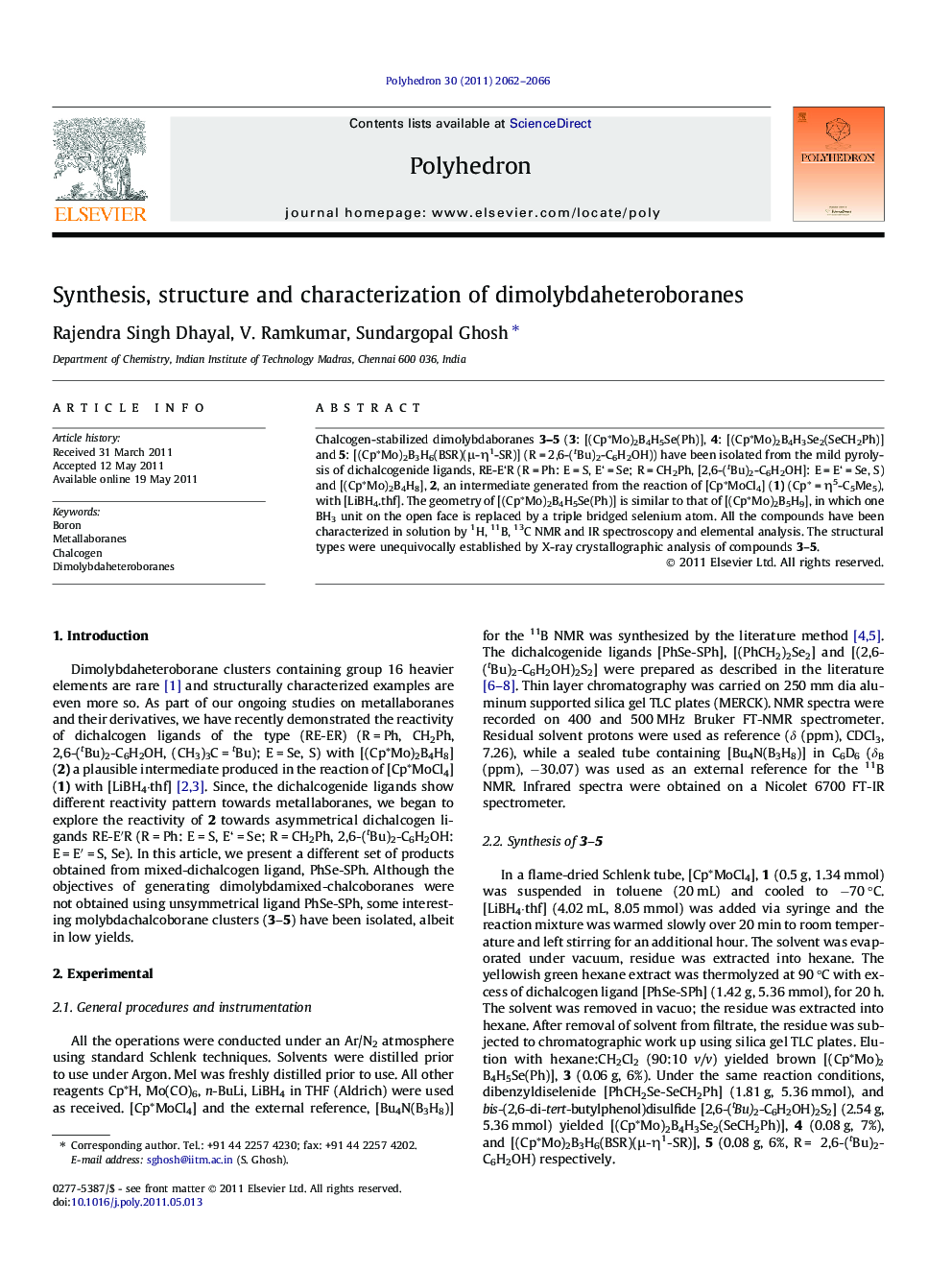| Article ID | Journal | Published Year | Pages | File Type |
|---|---|---|---|---|
| 1338561 | Polyhedron | 2011 | 5 Pages |
Chalcogen-stabilized dimolybdaboranes 3–5 (3: [(Cp∗Mo)2B4H5Se(Ph)], 4: [(Cp∗Mo)2B4H3Se2(SeCH2Ph)] and 5: [(Cp∗Mo)2B3H6(BSR)(μ-η1-SR)] (R = 2,6-(tBu)2-C6H2OH)) have been isolated from the mild pyrolysis of dichalcogenide ligands, RE-E‘R (R = Ph: E = S, E‘ = Se; R = CH2Ph, [2,6-(tBu)2-C6H2OH]: E = E‘ = Se, S) and [(Cp∗Mo)2B4H8], 2, an intermediate generated from the reaction of [Cp∗MoCl4] (1) (Cp∗ = η5-C5Me5), with [LiBH4.thf]. The geometry of [(Cp∗Mo)2B4H5Se(Ph)] is similar to that of [(Cp∗Mo)2B5H9], in which one BH3 unit on the open face is replaced by a triple bridged selenium atom. All the compounds have been characterized in solution by 1H, 11B, 13C NMR and IR spectroscopy and elemental analysis. The structural types were unequivocally established by X-ray crystallographic analysis of compounds 3–5.
Graphical abstractReaction of [Cp∗MoCl4] (Cp∗ = η5-C5Me5), with [LiBH4·thf] in toluene at −70 °C, followed by pyrolysis with excess of mixed-dichalcogenide ligand, PhSe-SPh yielded dimolybdachalcoborane [(Cp∗Mo)2B4H5Se(Ph)], whereas symmetrical dichalcogen PhCH2Se-SeCH2Ph yielded [(Cp∗Mo)2B4H3Se2(SeCH2Ph)].Figure optionsDownload full-size imageDownload as PowerPoint slideHighlights► Open cage dimolybdaheteroborane complexes were synthesized and characterized. ► Metallaborane intermediates are found to be stabilized by chalcogen ligands. ► Mixed-dichalcogenide ligand, PhSe-SPh yielded dimolybdachalcoborane [(Cp∗Mo)2B4H5Se(Ph)], whereas symmetrical dichalcogen PhCH2Se-SeCH2Ph yielded [(Cp∗Mo)2B4H3Se2(SeCH2Ph)].
